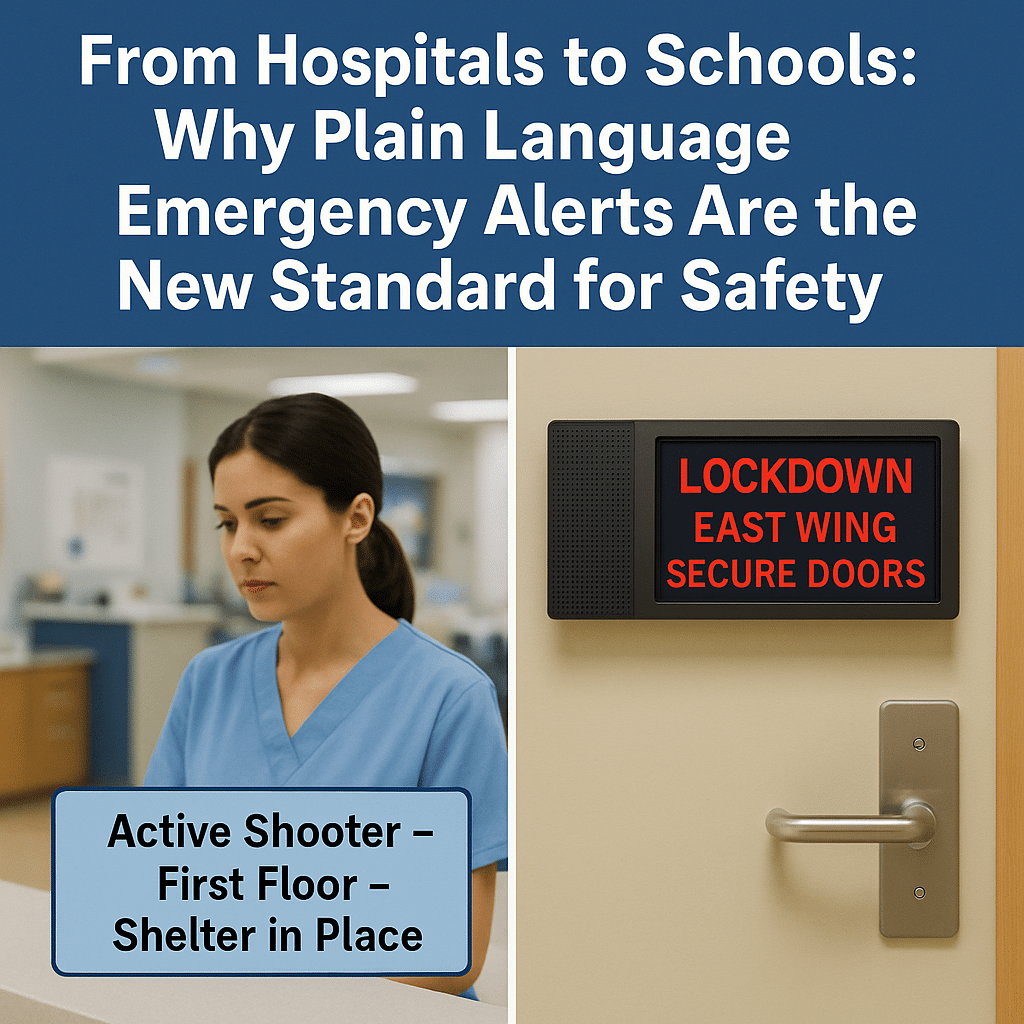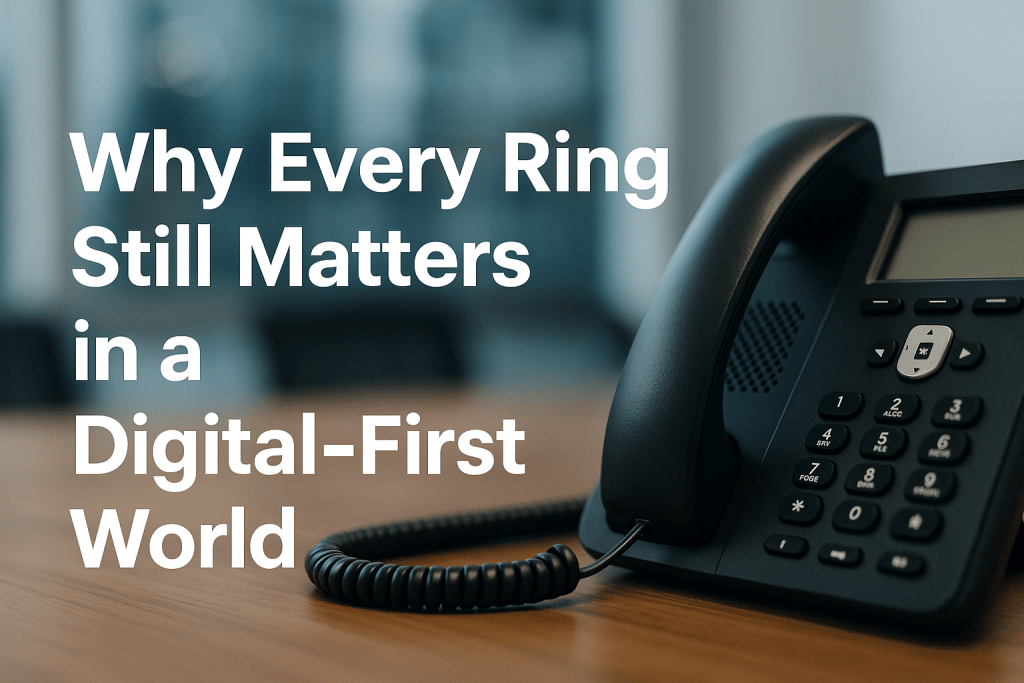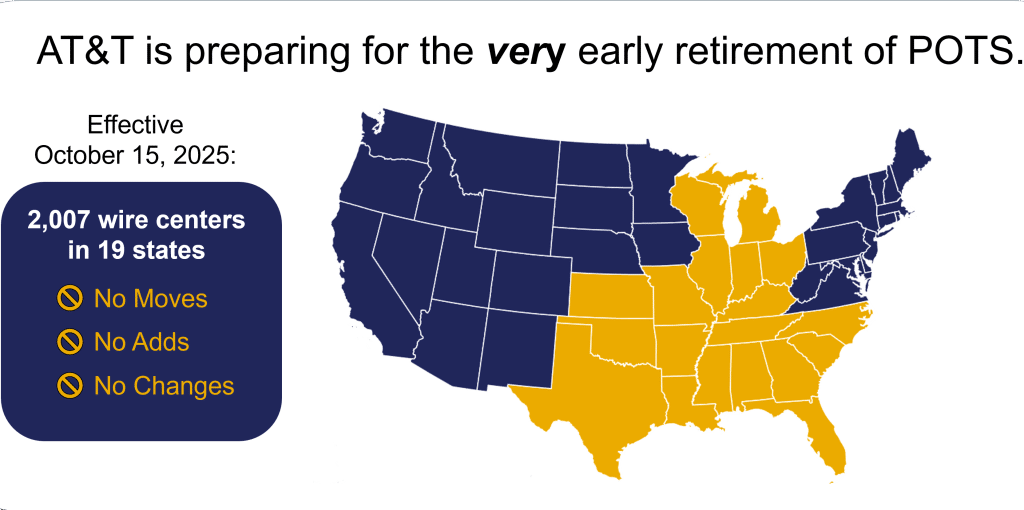If you’ve ever been inside a hospital, you’ve probably heard mysterious color-coded alerts over the public address system — “Code Blue,” “Code Red,” “Code Silver.” For years, healthcare facilities relied on these coded announcements to communicate emergencies quickly. But in practice, color codes often led to confusion, delay, and inconsistent responses.
Today, hospitals across the country are replacing these outdated codes with plain language emergency alerts—clear, descriptive messages that everyone can instantly understand. Instead of “Code Silver,” you might hear:
“Active Shooter – First Floor – Shelter in Place.”
This approach is now expanding far beyond hospitals. K–12 school districts are following suit, realizing that when every second counts, clarity saves lives.
Here’s how plain language protocols revolutionized emergency communication in healthcare—and why schools are next, with help from Phonewire.
Why Hospitals Made the Shift — and What Schools Can Learn
1. Clarity Under Stress
The National Incident Management System (NIMS) and Federal Emergency Management Agency (FEMA) both emphasize “plain language” as the national standard for emergency communication. Why? Because under stress, codes and jargon fail—especially when police, fire, and school staff must work together.
In healthcare, a “Code Silver” could mean an active shooter in one facility but a missing patient in another. The same problem exists in schools. Phrases like “Lockdown Procedure Alpha” or “Condition Red” mean little to new staff, substitute teachers, or students—and even less to law enforcement arriving on scene.
Plain language alerts, on the other hand, state the threat, location, and action clearly, such as:
“Lockdown – East Wing – Secure Doors Immediately.”
This eliminates guesswork and gets everyone responding in unison.
2. Safety, Consistency, and Accountability
Hospitals learned that plain language improves response time, situational awareness, and accountability. Now, schools are recognizing the same benefits.
Every year, new staff join the team, substitutes rotate in, and students come and go. Consistent, plain-language alerts ensure everyone—teachers, students, parents, and first responders—understands what’s happening and what to do.
Many state education and emergency agencies now recommend plain language as a best practice for school crisis communication. It also aligns with state-mandated school safety drills and active intruder preparedness plans.
What Plain Language Sounds Like in Schools
Plain language alerts don’t rely on memorizing codes. They focus on being clear and direct. Examples include:
- “Lockdown – Main Hall – Shelter in Place Immediately”
- “Fire Alarm – South Building – Evacuate to Parking Lot C”
- “Severe Weather – Gymnasium – Move to Interior Hallways”
- “Medical Emergency – Cafeteria – Send Nurse”
These statements are instantly understood by everyone—from kindergartners to law enforcement officers—without training or interpretation.
How Phonewire Delivers Plain Language Communication for Schools
1. Unified Audio and Visual Alerts Across Campus
Phonewire, in partnership with Valcom, helps K–12 schools implement integrated school emergency communication systems that combine voice paging, digital signage, and visual notification in one unified platform.
Valcom’s IP speakers, horns, and intercoms deliver crisp, reliable voice communication across classrooms, hallways, cafeterias, playgrounds, and buses.
The VIP-LC22 Series LCD Displays pair visual alerts with audible paging, displaying customized plain-language messages—like “Active Threat – Gymnasium – Lockdown Immediately”—while flashing attention-grabbing lights.
This inclusive approach ensures that students and staff with hearing or visual impairments receive the same life-saving information at the same time.
2. Control Alerts Instantly with Site Manager
Emergencies unfold in seconds. With Site Manager, administrators can launch precise, plain-language alerts across the district—or a single school—from any desktop, wall console, or mobile device.
Phonewire engineers configure Site Manager to integrate seamlessly with your existing PA systems, bell schedules, fire alarms, and intercoms, allowing for faster deployment and intuitive control.
3. Monitor, Test, and Prove Readiness with VEMASS
School districts are required to document emergency readiness and communication reliability. Valcom’s VEMASS monitoring platform provides live visibility into every speaker, display, and IP endpoint, so your safety team can confirm that systems are operational—before they’re needed.
This proactive monitoring reduces maintenance downtime and ensures compliance with state emergency management standards and school safety audits.
From “Code Blue” to “Plain Speak” — A Model for Schools
Just as hospitals discovered that color codes create confusion, schools are finding that complex drill terms can lead to hesitation or panic. A clear, direct statement like
“Lockdown – West Wing – Police on Site – Stay Secure”
is understood instantly by every person on campus, from the principal to the youngest student.
With Phonewire and Valcom, schools can make the transition to plain language emergency alerts without replacing existing infrastructure—upgrading clarity, safety, and compliance all at once.
Modernize Your School’s Emergency Communication System
Phonewire helps K–12 schools across the U.S. modernize their campus communication and safety systems using Valcom’s proven technology. Our customized solutions include:
- IP and analog school paging systems
- Intercom and bell integration
- Visual signage and alert beacons
- Mobile activation and district-wide control
- System monitoring and health reporting
Whether you’re updating your lockdown procedures or implementing district-wide notification systems, Phonewire delivers clear, reliable communication when it matters most.
Partner with Phonewire for Safer Schools
Phonewire is a trusted Valcom partner specializing in K–12 emergency communication systems and school safety technology.
We help districts move from outdated code systems to plain-language, unified communication solutions that protect students and staff during any emergency—without disrupting your daily operations.
Call Phonewire today at 1-800-857-1517
Or request a quote at phonewire.com/quote



